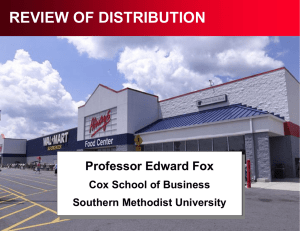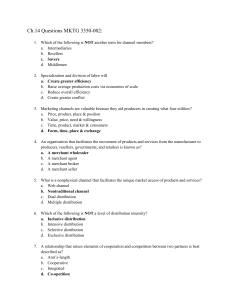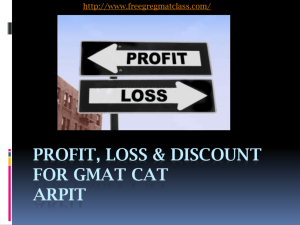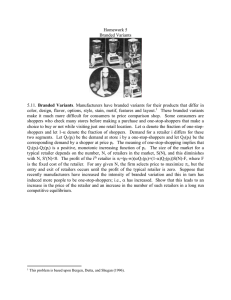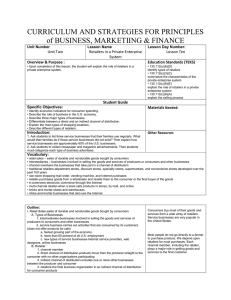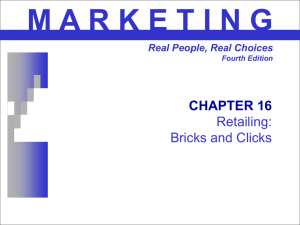MKTG 221 Introduction to Marketing Assignment #6 – Distribution
advertisement
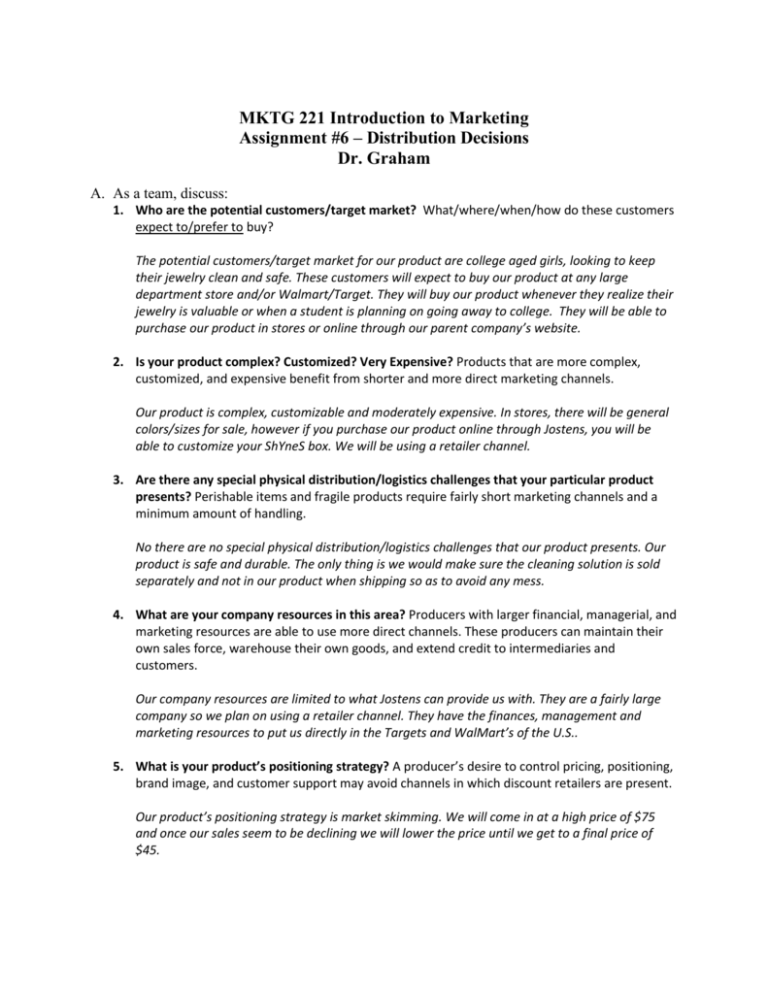
MKTG 221 Introduction to Marketing Assignment #6 – Distribution Decisions Dr. Graham A. As a team, discuss: 1. Who are the potential customers/target market? What/where/when/how do these customers expect to/prefer to buy? The potential customers/target market for our product are college aged girls, looking to keep their jewelry clean and safe. These customers will expect to buy our product at any large department store and/or Walmart/Target. They will buy our product whenever they realize their jewelry is valuable or when a student is planning on going away to college. They will be able to purchase our product in stores or online through our parent company’s website. 2. Is your product complex? Customized? Very Expensive? Products that are more complex, customized, and expensive benefit from shorter and more direct marketing channels. Our product is complex, customizable and moderately expensive. In stores, there will be general colors/sizes for sale, however if you purchase our product online through Jostens, you will be able to customize your ShYneS box. We will be using a retailer channel. 3. Are there any special physical distribution/logistics challenges that your particular product presents? Perishable items and fragile products require fairly short marketing channels and a minimum amount of handling. No there are no special physical distribution/logistics challenges that our product presents. Our product is safe and durable. The only thing is we would make sure the cleaning solution is sold separately and not in our product when shipping so as to avoid any mess. 4. What are your company resources in this area? Producers with larger financial, managerial, and marketing resources are able to use more direct channels. These producers can maintain their own sales force, warehouse their own goods, and extend credit to intermediaries and customers. Our company resources are limited to what Jostens can provide us with. They are a fairly large company so we plan on using a retailer channel. They have the finances, management and marketing resources to put us directly in the Targets and WalMart’s of the U.S.. 5. What is your product’s positioning strategy? A producer’s desire to control pricing, positioning, brand image, and customer support may avoid channels in which discount retailers are present. Our product’s positioning strategy is market skimming. We will come in at a high price of $75 and once our sales seem to be declining we will lower the price until we get to a final price of $45. As a result of this discussion, justify the following choice: Of the common CONSUMER PRODUCT distribution channels shown below, which two types of distribution channels will you use with your product? The two types of distribution channels we will use with our product are the direct and retailer channels. B. Also, what level of Distribution Intensity will you pursue: Intensive, Selective, or Exclusive? Why? The level of Distribution Intensity we will pursue is Selective. We will use Selective distribution because we don’t want our product in every store, but rather those stores that will allow our product to thrive. We will make sure our product is only in those stores that we see fit for our product and that will promote our product’s quality and benefits. C. Finish this sentence “The types of retailers we would like to work with include…” (e.g., Department, Specialty, Supermarkets, Discount, etc.). See p. 6 of Notes G. The types of retailers we would like to work with include department stores, specialty stores, and discount stores. We also would like our product to be online. D. Name at least one specific retailer (e.g., Kmart, Best Buy, etc.) that you hope to work with in each of the retailer types you have identified in C. Specific retailers that we hope to work with are Macy’s, Kay Jewelers, and Target/Walmart.



